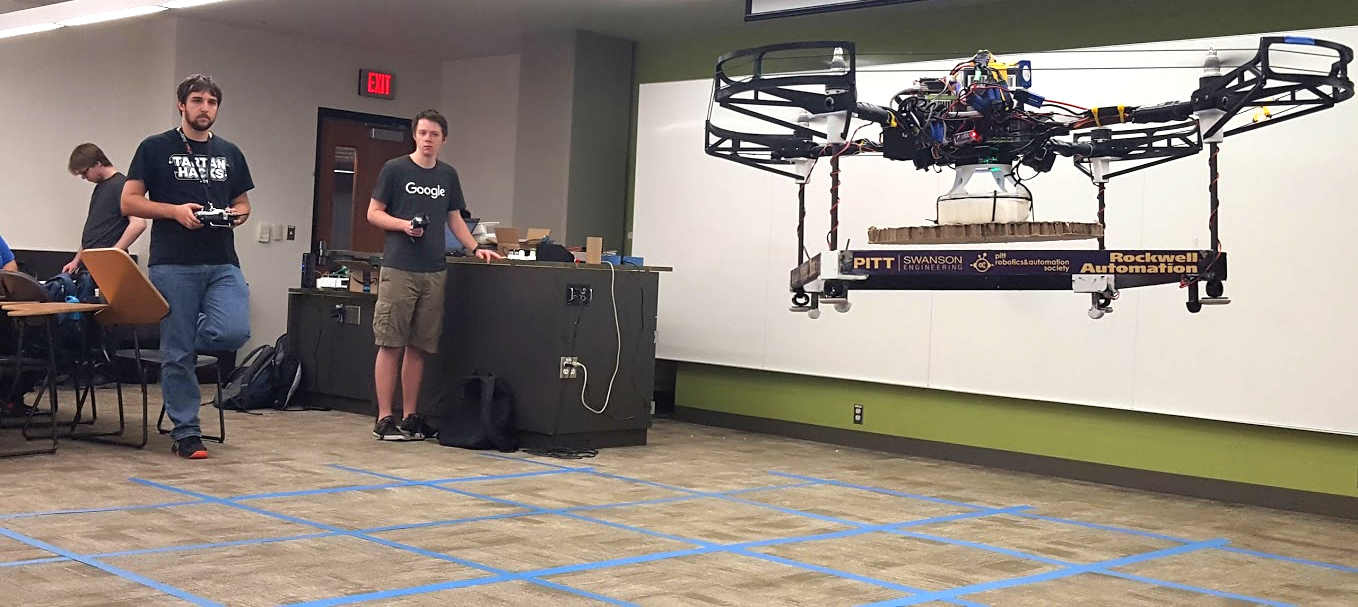News Feed
General Body Meeting on September 3rd, 2pm-3pm in Benedum Hall 102
The Pitt RAS will be holding our first general body meeting of the semester, open to all, on Sunday, September 3rd at 2pm. The meeting will be held in Benedum Hall, room 102 (The large conference room behind the orange desk on the first floor of Benedum, also known as the Engineering Building). We will be presenting our projects for the semester, and introducing our new project leads. Pizza will also be present.
IARC Mission 7 Technical Postmortem 2017
During the 2016-2017 academic year the Robotics and Automation Society at the University of Pittsburgh designed and built a drone to compete in Mission 7 of the International Aerial Robotics Competition. The team competed at the American venue and was awarded “Best System Design” and achieved the highest score at the venue.
This post will explore from a technical perspective the current capabilities of 2017’s entry, the overall design of the system, and the challenges facing the team in the 2017-2018 academic year.

Current Capabilities:
The drone is currently capable of estimating its absolute position in the vertical direction and its absolute horizontal velocity. We are capable of reliable and controlled autonomous takeoff and landing as well as horizontal translation under velocity control. Velocity control allows us to fly pseudo-waypoints (requesting a velocity for an amount...
Review of Slamtec RPLIDAR A2 on NVIDIA Jetson
Our IARC Mission 7 team this past year used an RPLIDAR A2 made by Slamtec for obstacle detection. For a little background information, the drone flies in an open gymnasium and must avoid four moving ground robots with tall PVC pipes on top.
The installation and setup process were fairly painless. We have used both the NVIDIA Jetson TX1 and TX2 with this sensor. The default configuration of Linux4Tegra does not include the kernel module for communicating with the CP210x usb-to-serial converter included with the RPLIDAR. To set up this kernel module, we followed the instructions here.
After that was done, everything worked flawlessly with the ROS packages provided by Slamtec here.
We had no problems with noisy or invalid data coming out of the sensor; we were easily able to cluster the data into individual obstacles that could then be fed into our obstacle avoidance code.
...


